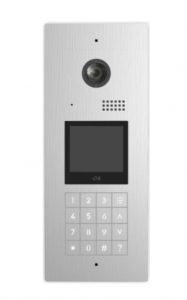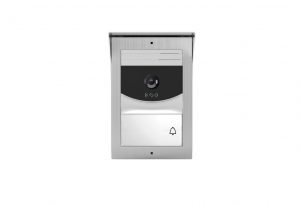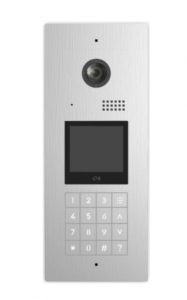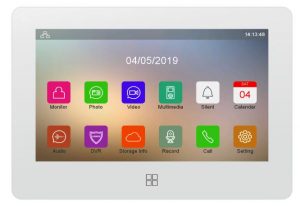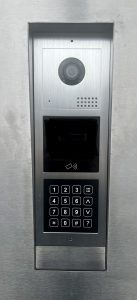In the realm of modern communication within homes and businesses, the significance of intercom systems is paramount. These systems not only enhance convenience but also bolster security and connectivity in various settings. This comprehensive guide is designed to demystify the process of intercom installation, providing a detailed walkthrough for homeowners and business operators. Whether you’re a DIY enthusiast or seeking knowledge before hiring professionals, this guide will equip you with essential insights into the world of intercom systems.
Understanding Intercom Systems
Types of Intercom Systems: The journey into intercom installation begins with understanding the different types available. Primarily, there are two categories – wired and wireless systems. Wired systems are known for their reliability and are ideal for new construction where wiring can be easily integrated. On the other hand, wireless systems offer flexibility and are perfect for retrofitting in existing structures. Within these categories, intercoms can further be classified into audio-only systems, which are straightforward and cost-effective, and video intercoms, which offer the added advantage of visual identification.
Choosing the Right System: Selecting the appropriate system hinges on several factors. For residential purposes, the size of the property, the need for privacy, and security considerations play crucial roles. In commercial settings, the scale of communication, integration with other security systems, and the layout of the premises are crucial determinants.
Pre-Installation Checklist
Before diving into the installation process, it’s essential to prepare adequately.
Tools and Materials Needed: A basic toolkit for intercom installation includes screwdrivers, wire strippers, drills, and possibly a ladder. Additionally, specific materials like cables (for wired systems), mounting brackets, and the intercom units themselves are necessary.
Safety Precautions: Safety cannot be overstated. Ensure all tools are in good condition and understand the basics of working with electrical systems, especially when dealing with wired intercoms. Always turn off the power when handling electrical connections.
Step-by-Step Installation Guide
Planning the Installation: The first step is planning. For wired systems, this involves mapping out where the wires will run and determining the locations for each intercom unit. For wireless systems, it’s more about deciding where to place the units for optimal performance.
Wiring and Mounting: In wired systems, running the cables is the most challenging part. Ensure that the wires are properly insulated and run through safe routes. Mounting the units should be done securely, making sure they are accessible yet unobtrusive.
System Configuration: Once everything is in place, it’s time to configure the system. This involves setting up the main console, connecting each unit, and ensuring that the power supply is adequately handled.
Testing the System: The final step is testing. Make sure every unit is functioning correctly, the sound quality is good, and there are no connectivity issues. Troubleshoot any problems that arise immediately.
Maintenance and Troubleshooting
Routine Maintenance: Regular maintenance is crucial for ensuring the longevity and efficiency of your intercom system. This includes periodic checks of all hardware components, ensuring that all connections are secure, and cleaning the units to prevent dust accumulation, which can affect performance. For wired systems, inspect the cables periodically for any signs of wear and tear, especially in areas where they might be exposed to environmental factors. Wireless systems, while less demanding in terms of physical maintenance, should be checked for software updates to ensure they are running the latest version for optimal performance.
Troubleshooting Common Issues: Even with the best installation and maintenance practices, issues can arise. Common problems include static or poor audio quality, connectivity issues in wireless systems, and power malfunctions. For audio issues, check the connections and the condition of the speakers and microphones. Wireless connectivity problems are often solved by resetting the system or moving units to reduce interference. Power issues in wired systems usually point to problems with the wiring or the power source, and it’s often best to consult a professional if basic checks don’t resolve the issue.
Advanced Tips and Tricks
Enhancing System Performance: To get the most out of your intercom system, consider integrating it with other smart home or office systems. This can include connection to door locks for remote access control, integrating with security cameras for enhanced surveillance, or linking to smart home hubs for centralized control. Such integrations not only improve the functionality of your intercom system but also enhance the overall security and efficiency of your property.
Integration with Other Systems: Modern intercom systems often come with features that allow for easy integration with existing security or automation systems. This can include features like remote unlocking, integration with CCTV systems, or alerts that can be sent to your phone or other devices. When planning your installation, consider these integrations as they can significantly increase the utility of your intercom system.
Advanced Installation Techniques
Customizing Intercom Systems for Unique Spaces: Tailoring intercom systems to fit specific architectural designs or unique building layouts. This includes integrating intercoms into existing infrastructure without disrupting the aesthetic or structural integrity of the building.
Overcoming Technical Challenges: Addressing common technical challenges such as installing in areas with thick walls or multiple floors, and ensuring strong signal strength for wireless systems in complex environments.
Benefits of Intercom Systems (Approx. 500 words)
Enhanced Security: Discuss how intercom systems contribute to overall security, allowing for controlled access, monitoring entrances, and integrating with security cameras and alarm systems.
Convenience and Accessibility: The role of intercoms in providing easy communication within large homes or between different departments in a business setting. Highlight the convenience of modern systems that can integrate with smartphones and other smart devices.
Future of Intercom Technology (Approx. 500 words)
Emerging Trends and Innovations: Explore upcoming trends in intercom technology, such as AI integration, facial recognition capabilities, and advanced connectivity options.
The Role of IoT and Smart Home Integration: Discuss how the Internet of Things (IoT) is shaping the future of intercom systems, making them more integrated with other smart home devices and more user-friendly.
Case Studies and Real-World Applications (Approx. 500 words)
Residential Case Study: Detail a real-world example of a residential intercom system installation, discussing the homeowner’s needs, the chosen system, and the installation process.
Commercial Case Study: Provide an example of a commercial intercom system installation, focusing on the challenges and solutions in a business context.
Advanced Installation Techniques
Customizing Intercom Systems for Unique Spaces: Every building has its unique characteristics, and installing an intercom system often requires a tailored approach. In historical buildings, for instance, the installation process must respect the architectural integrity, requiring wireless systems or minimally invasive wiring techniques. In modern homes, homeowners often prefer systems that blend seamlessly with the interior design. Customization can range from hidden wiring to bespoke intercom units that complement the building’s aesthetics.
Overcoming Technical Challenges: One of the main challenges in intercom installation is ensuring effective communication across barriers like thick walls or across multiple floors. In such cases, it’s crucial to select the right type of system – wired systems might be more reliable in these scenarios. For wireless systems, strategic placement of units and the use of signal boosters can help overcome these obstacles.
Benefits of Intercom Systems
Enhanced Security: The primary benefit of an intercom system is the increased security it provides. By allowing visual and audio verification of visitors, intercoms add an essential layer of security to any property. They can be integrated with door release mechanisms and connected to broader security systems, including CCTV and alarm systems, to create a comprehensive security solution.
Convenience and Accessibility: In large homes, communicating across different rooms or floors can be cumbersome without an intercom system. Similarly, in a business environment, intercoms facilitate quick and efficient communication between departments or with the front desk. Modern systems offer the convenience of integration with smartphones, allowing residents or employees to communicate with visitors or each other from anywhere on the property or even remotely.
Technical Considerations in Intercom Installation
Understanding Wiring Schemes: Delve into the specifics of wiring for intercom systems, including the differences between series and parallel wiring, and the implications for system performance and scalability.
Power Supply and Backup Solutions: Discuss the importance of a reliable power supply for intercom systems, options for backup power solutions, and considerations for energy efficiency.
User Experience and Accessibility
Designing User-Friendly Systems: When it comes to intercom systems, the design of the user interface plays a pivotal role. It’s not just about the technical prowess of the system; how users interact with it is equally crucial. A well-designed interface can make the difference between a system that enhances daily life and one that becomes a source of frustration.
Feedback and Improvement: In the world of intercom systems, user feedback is invaluable. It provides real-world insights into how the systems perform in various environments. Moreover, it highlights areas needing improvement, ensuring that future iterations of the product are more aligned with user needs.
Broader Applications of Intercom Systems
Intercoms in Public and Commercial Spaces: Examine the use of intercom systems in settings like schools, hospitals, and large commercial complexes. Discuss the unique requirements and challenges in these environments.
Emergency and Public Safety Uses: The role of intercom systems in emergency situations, such as public alerts, coordination in crisis scenarios, and their integration into public safety infrastructure.
Future Developments and Innovations
Advancements in Wireless Technology: Discuss the future of wireless intercom systems, including potential advancements in signal strength, range, and stability.
Integration with Emerging Technologies: Explore how emerging technologies like augmented reality, 5G networks, and advanced AI could revolutionize intercom systems in the future.
Technical Considerations in Intercom Installation
Understanding Wiring Schemes: Choosing the right wiring scheme is a critical decision in intercom installation. With series wiring, each component connects along a single path. This setup is simpler to install. However, it has a notable drawback. If one unit fails, it can impact the entire system. Conversely, parallel wiring offers a different approach. In this scheme, all units link to a central point. Although this method is more complex to install, it typically provides greater reliability. Additionally, it allows for easier troubleshooting. Each unit operates independently in a parallel setup, so the failure of one unit doesn’t affect the others. Therefore, while series wiring might be appealing for its simplicity, parallel wiring is often the better choice for larger or more critical systems.
Power Supply and Backup Solutions: Ensuring a consistent power supply is vital for the uninterrupted operation of an intercom system. This is particularly important in commercial settings where communication is critical. Backup power solutions, such as uninterruptible power supplies (UPS) or generators, can provide continuity in the event of power outages. Additionally, energy-efficient models can help reduce operational costs over time.
User Experience and Accessibility
Designing User-Friendly Systems: The effectiveness of an intercom system is not just in its technical capabilities but also in its ease of use. Systems need to be intuitive, with clear instructions and accessible controls. This is especially important in settings like hospitals or senior living facilities, where users may have limited technological proficiency or physical disabilities.
Installation Best Practices
Quality Assurance in Installation
The durability and effectiveness of an intercom system hinge significantly on the quality of materials and the installation process. Firstly, choosing high-grade cables is essential. Additionally, robust intercom units and reliable power sources are crucial for system longevity. Furthermore, professional installers should adhere to industry-standard practices. This ensures every component is not only correctly but also securely installed. Moreover, the system’s infrastructure must be robust.
This resilience is necessary to withstand environmental factors and potential tampering. Importantly, each step in the installation process contributes to the overall reliability of the intercom system. Therefore, attention to detail is paramount in every aspect of the installation.
After the installation process, it’s essential to embark on a thorough testing phase. Firstly, this involves meticulously checking each intercom unit. You should ensure they all have clear audio transmission. Additionally, for video intercom systems, it’s crucial to test the video components. Specifically, you need to assess the image clarity. Moreover, it’s vital to confirm that all parts of the system communicate seamlessly with each other.
Furthermore, another key aspect is to test the system’s integration with other security components. For instance, this includes door access controls and alarm systems. Consequently, this step is crucial to ensure a cohesive security setup. By doing so, you can guarantee that the entire system functions as a unified whole.
Legal and Compliance Considerations
When installing and using intercom systems with recording or video capabilities, privacy is a major concern. Installers and users must understand and follow the laws that govern audio and video recording. It’s crucial to handle any captured data in line with privacy and data protection legislation. This aspect is especially important in areas with strict data protection laws, such as the European Union, where GDPR compliance is mandatory.
Environmental Impact and Sustainability
When installing an intercom system, adopting eco-friendly practices significantly reduces environmental impact. Firstly, choosing recyclable materials wherever possible is a key step. This approach not only supports sustainability but also promotes a greener installation process. Additionally, minimizing waste during installation plays a crucial role. By carefully planning and efficiently using resources, installers can substantially decrease the amount of waste generated. Furthermore, it’s essential to responsibly dispose of any electronic waste. This means ensuring that old or unused electronic components go through proper recycling channels.
Modern intercom systems prioritize energy efficiency in their design. They often feature LED indicators and low-power standby modes. These features significantly cut down on energy consumption. Not only do they reduce operational costs, but they also help in shrinking the environmental footprint. Smart energy management plays a key role here. It ensures that the system uses power only when necessary, adding to the efficiency. Moreover, these advancements reflect a growing trend towards eco-friendly technology in home and business security systems. By focusing on energy efficiency, manufacturers are responding to consumer demand for sustainable solutions. This approach not only benefits the environment but also leads to cost savings for users.
Conclusion
In conclusion, by understanding the various systems available and diligently following a comprehensive installation guide, you can effectively ensure that your intercom system meets your needs for years to come. Remember, the key to a successful intercom installation lies in careful planning, proper execution, and regular maintenance. Significantly, intercom systems have evolved, and by embracing these advancements, you can not only enhance communication but also significantly improve the security and convenience of your property.
By actively engaging in this process, you not only equip your property with a reliable communication tool but also contribute to a safer and more connected environment. Therefore, embrace the challenge, seek the best solutions, and enjoy the peace of mind that comes with a state-of-the-art intercom system.


